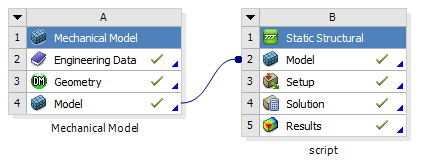
You could add some robustness to the above script but reading through the lines with string functions but, as written, it just grabs the specific substring from the output directly. But when they are quadratic, this command only gets the values at the corner nodes and the mide nodes are zero, what is wrong. This is probably the best solution but may be a little difficult to set up and validate correctly.Įdit: Here's the code for getting the next time step (there is not a *get command): /solu Hello, How to get Stress result in APDL while using quadratic elements (When the elements are linear it is necessary to use only vget, TENSEQV (1), NODE, S, EQV. If you wanted to use times instead of loadstep numbers, it would be a few extra lines to get the next time value but it is possible.Īlternatively, you could use a table, which allows the BFE command to apply values based on the time of the current loadstep. cnt = cnt + 1 ! Tracks loadstep number. It's a little convoluted to get the next *time* to be run but you could easily apply it to specific load steps by using a counter in your command snippet to track the loadstep.


However, you can't do ranges you have options like "first," "last," "all," or by number, which lets you specify a loadstep.Īlternatively, if you like, you can make one command snippet that runs before all load steps and put a *if statement inside that checks the next time to be solved and then applies your commands if that time is within your range. In the command snippets in Workbench, you have the option of specifying which time points/loadsteps the command snippet will run before.


 0 kommentar(er)
0 kommentar(er)
